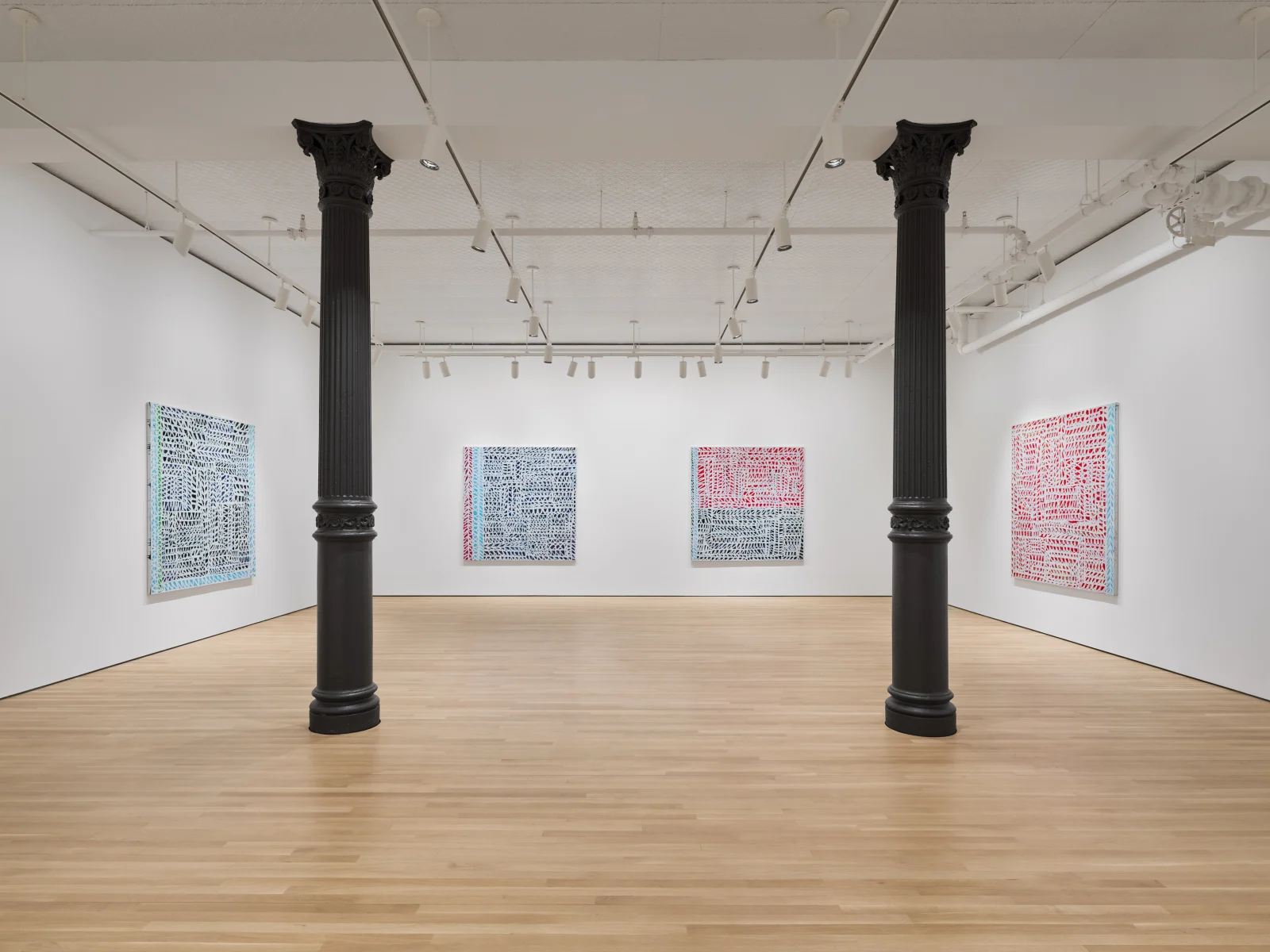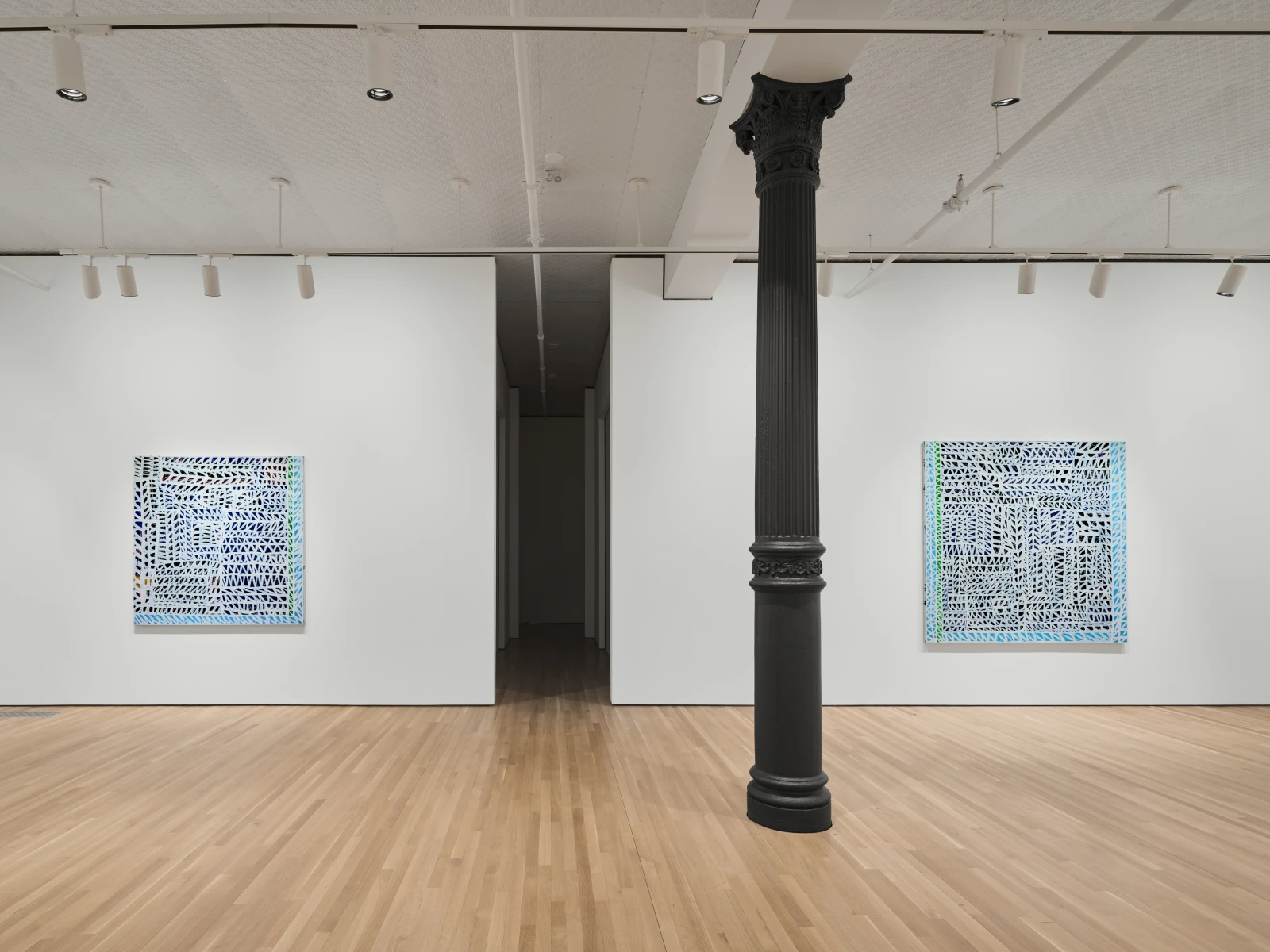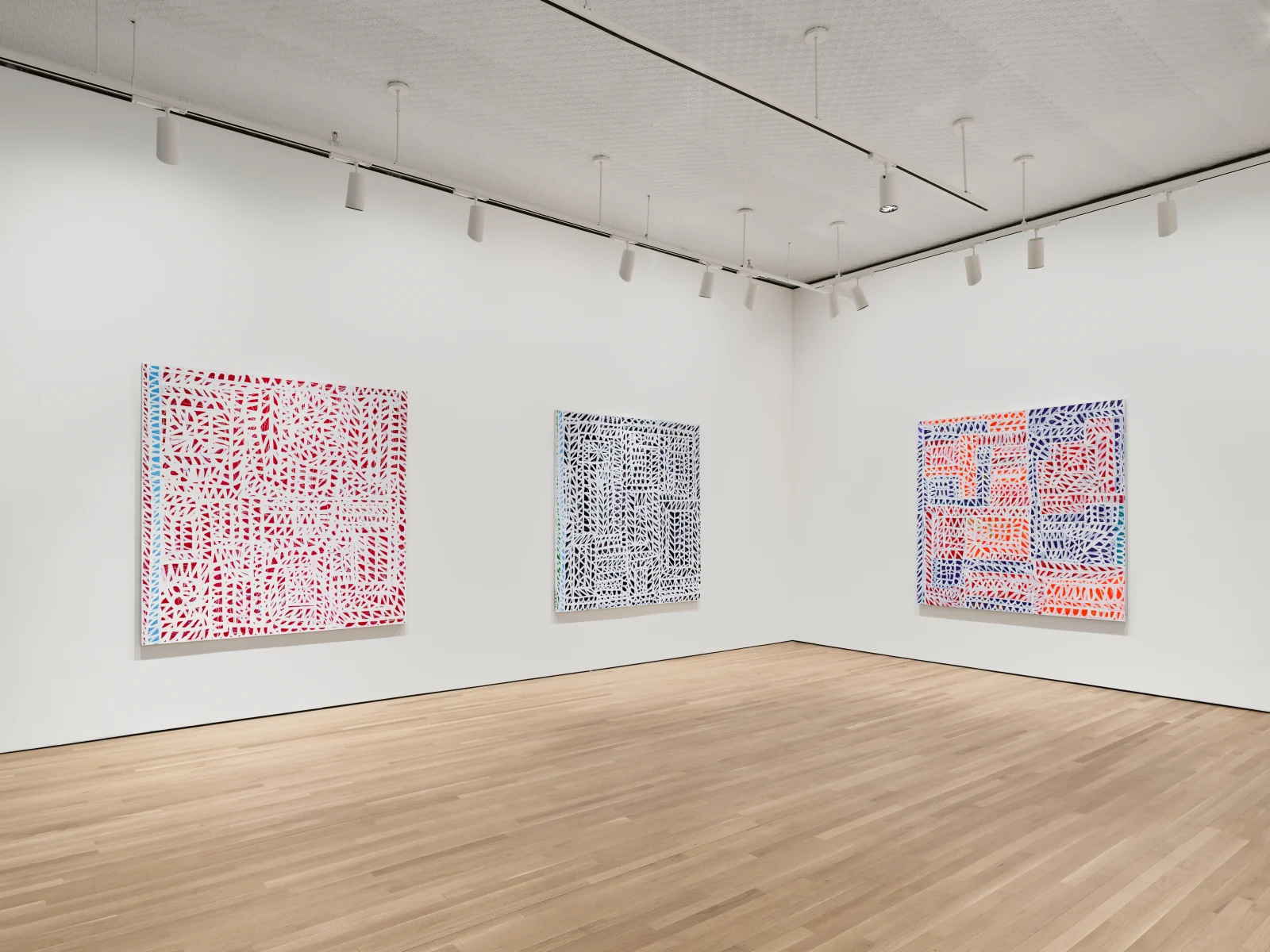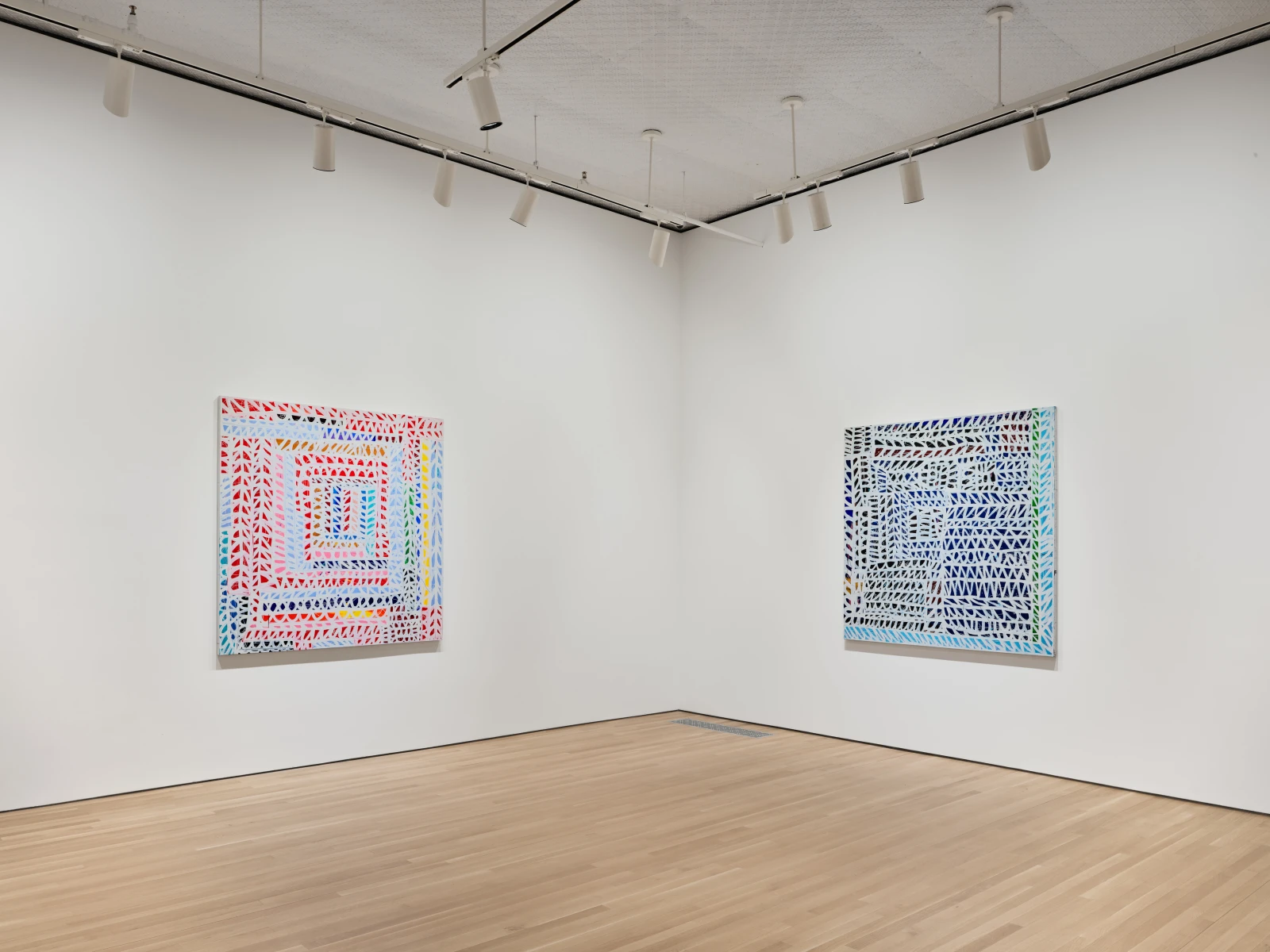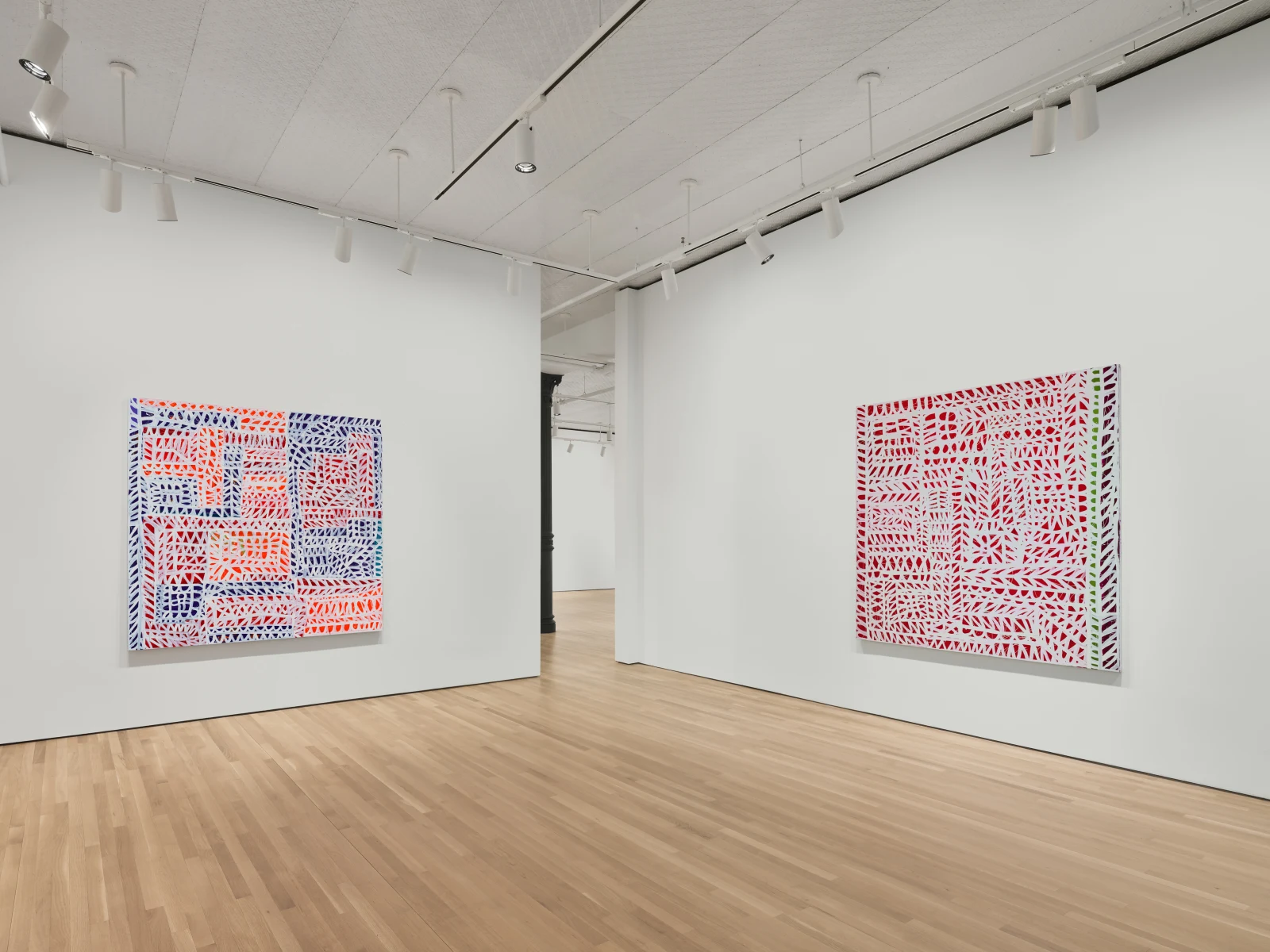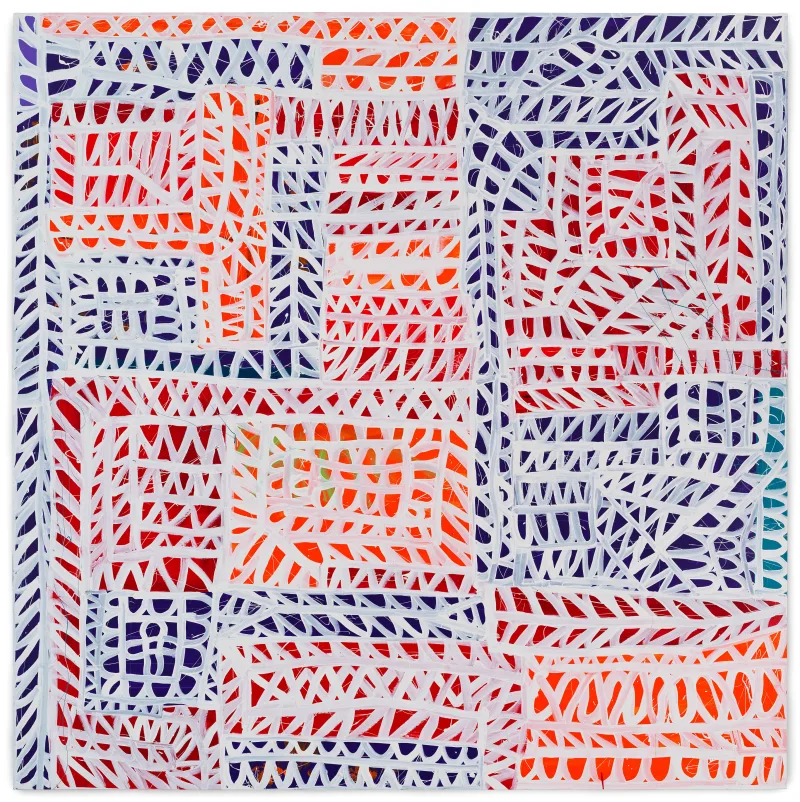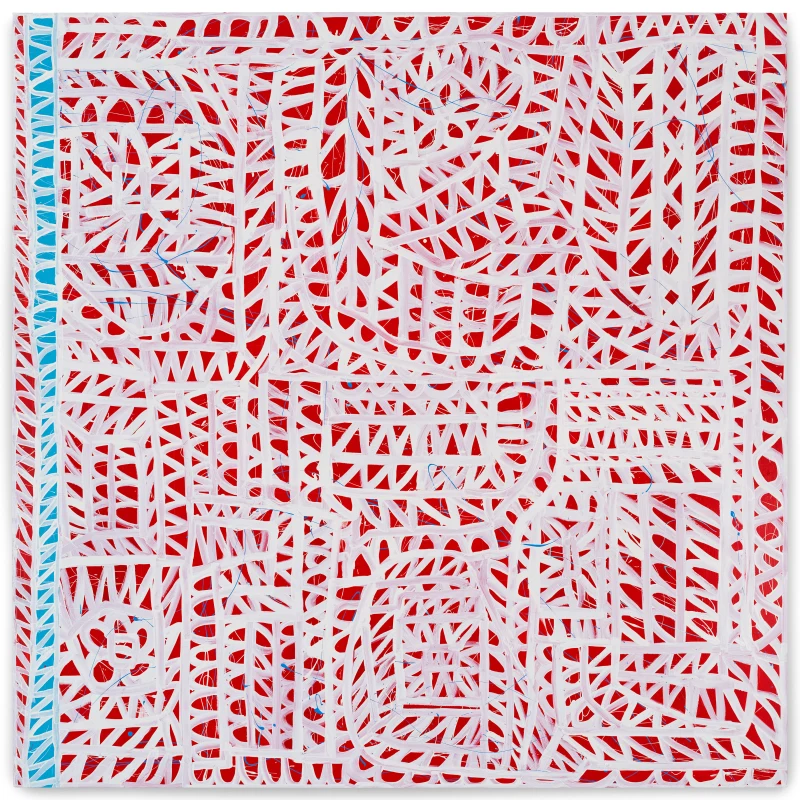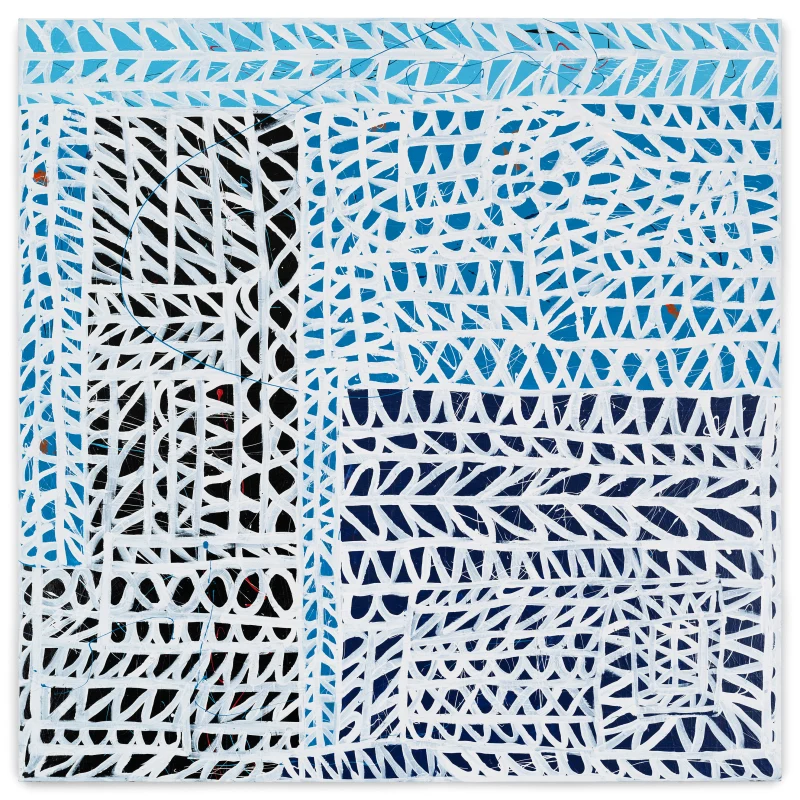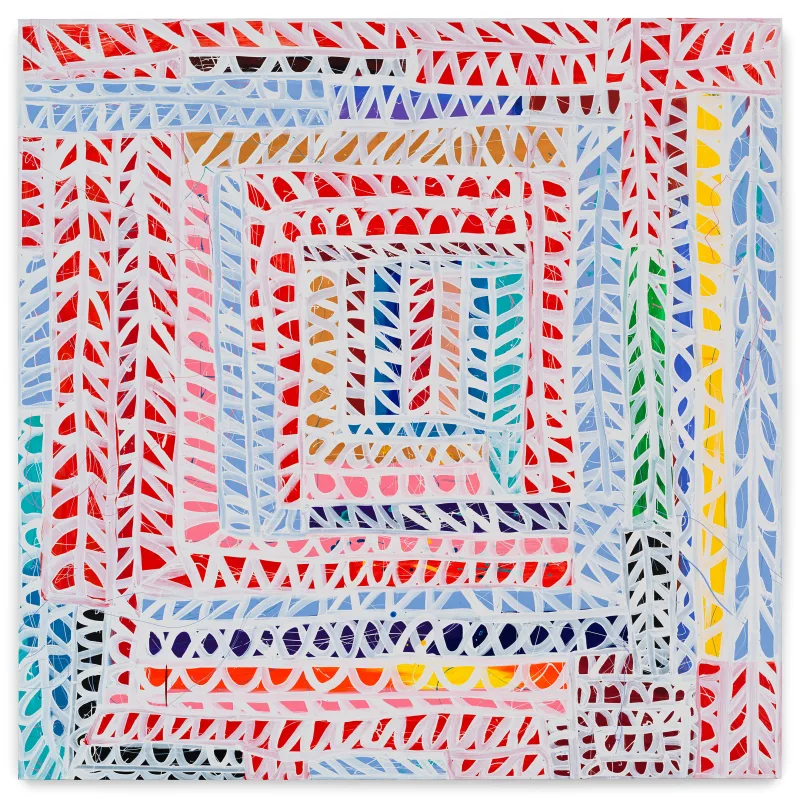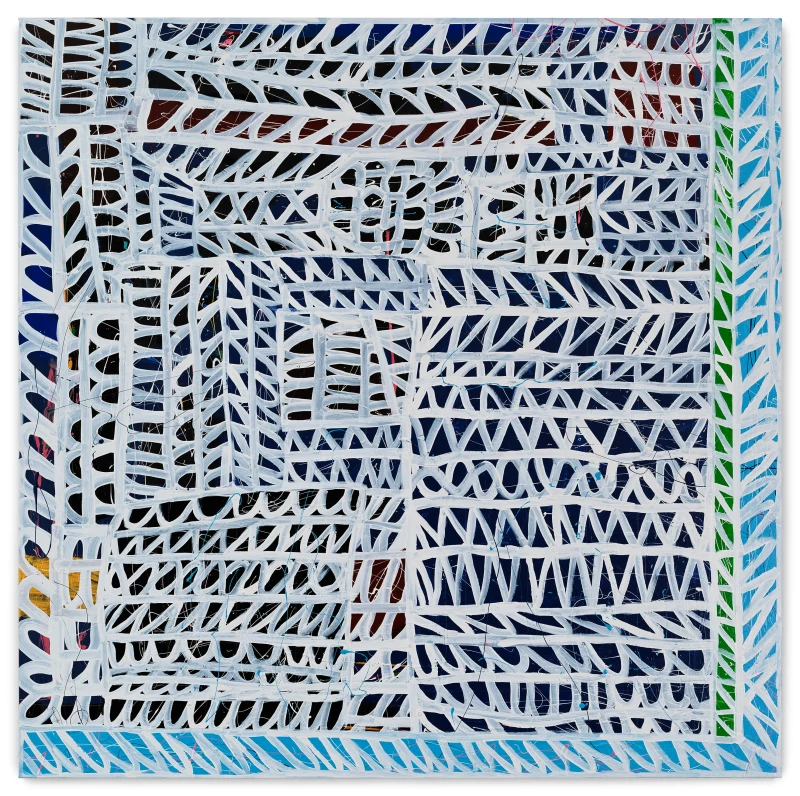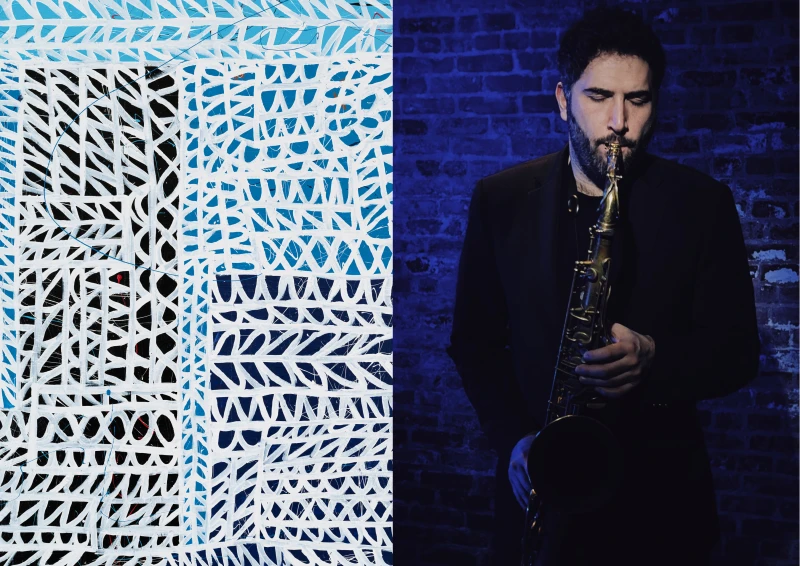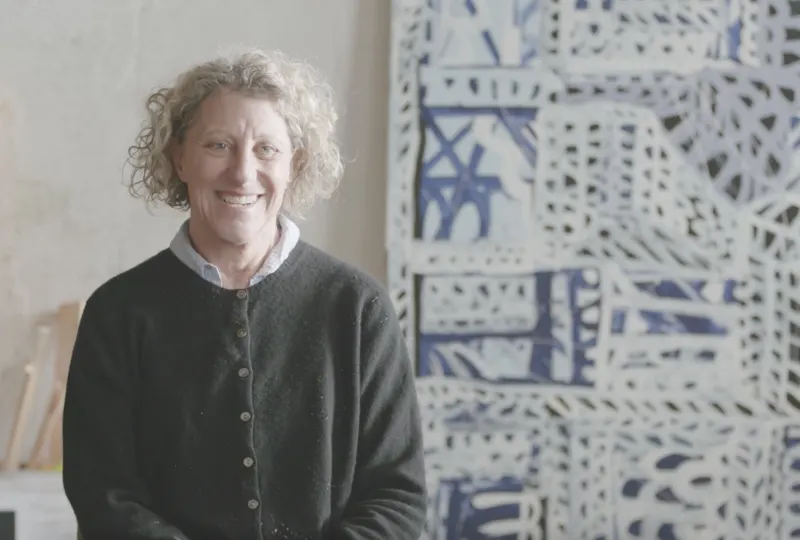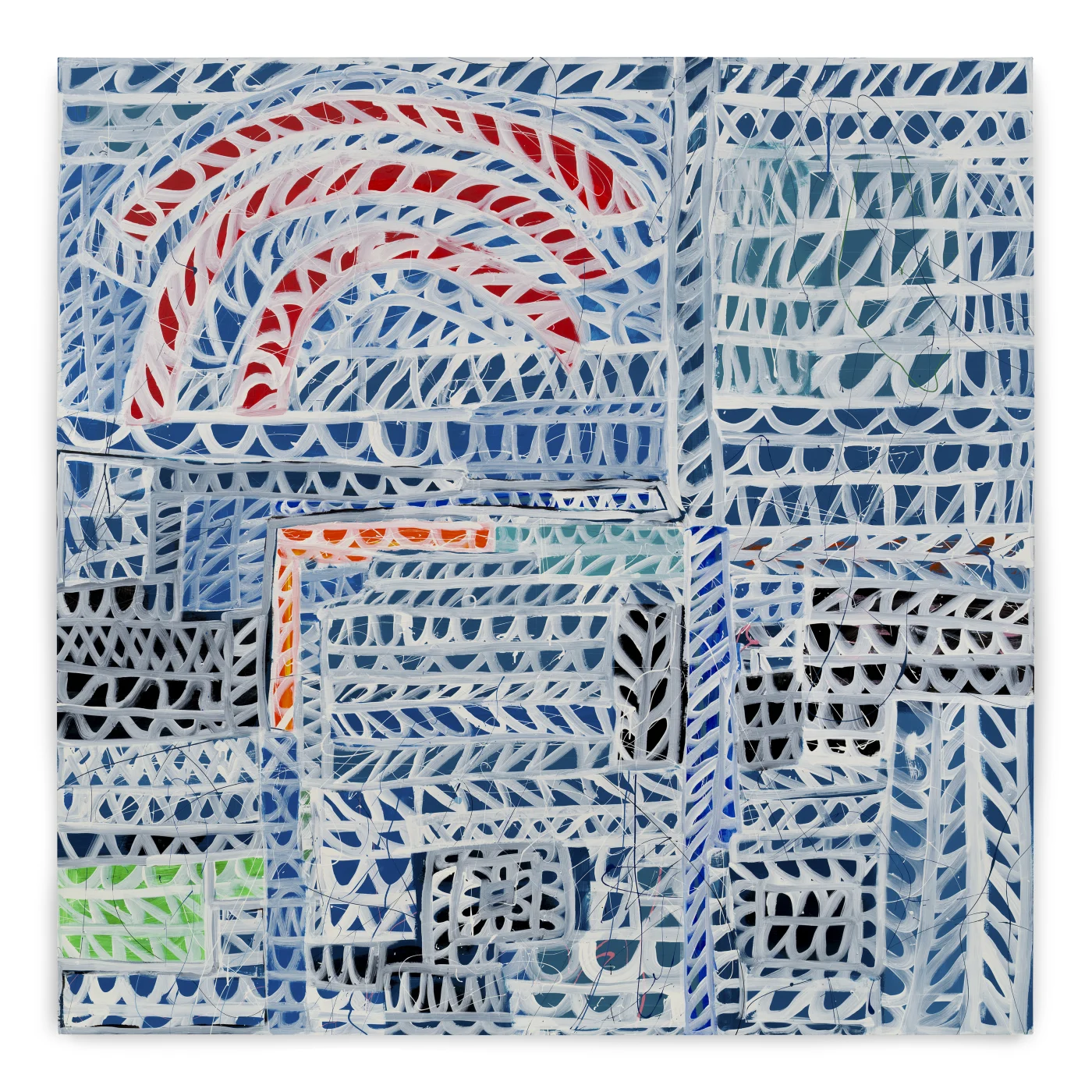
Pam Glick: Bark
Overview
“Glick’s subject…is awesome natural spectacle, and her nod to unmanageable nature can be read as a metaphor not only for environmental issues, but also for a disobedient and obstreperous relationship with tightly hewn forms of contemporary abstraction. In concrete terms, this dynamic is evident in an animated automatic mark-making that provides an intense rhythm and vitality, which sets Glick apart from many artists." –Andrew Hunt, Artforum (November 2023).
Stephen Friedman Gallery presents Bark, a solo exhibition of new paintings by Pam Glick. This marks her second exhibition at the gallery and her first major show in New York since her celebrated 2016 White Columns exhibition, curated by Matthew Higgs. Glick’s dynamic new body of work builds upon her decades-long exploration of abstraction. It reveals a robust physicality and emotional intensity that is as experimental as it is sublime.
Glick’s paintings are notable for their improvisational yet rhythmic formal play. In each of her works, she juxtaposes a scrim of geometric patterns with cascades of looping gestural swirls. Reinforcing the square format of the canvas, she suspends an architecture of interconnected vertical and horizontal segments punctuated by arcs, zigs, zips and diagonals. Underlying this scaffolding are broad, free-wheeling swathes of colour interrupted by explosive splatters of pigment. Glick’s paintings, created as distinct series, walk a tightrope between movement and containment, expressiveness and restraint. They can be understood as psychological mappings of nature or depictions of heightened emotional states. Never static, they mark the passage of time, and capture the cyclical rhythms of life.
Stephen Friedman Gallery presents Bark, a solo exhibition of new paintings by Pam Glick. This marks her second exhibition at the gallery and her first major show in New York since her celebrated 2016 White Columns exhibition, curated by Matthew Higgs. Glick’s dynamic new body of work builds upon her decades-long exploration of abstraction. It reveals a robust physicality and emotional intensity that is as experimental as it is sublime.
Glick’s paintings are notable for their improvisational yet rhythmic formal play. In each of her works, she juxtaposes a scrim of geometric patterns with cascades of looping gestural swirls. Reinforcing the square format of the canvas, she suspends an architecture of interconnected vertical and horizontal segments punctuated by arcs, zigs, zips and diagonals. Underlying this scaffolding are broad, free-wheeling swathes of colour interrupted by explosive splatters of pigment. Glick’s paintings, created as distinct series, walk a tightrope between movement and containment, expressiveness and restraint. They can be understood as psychological mappings of nature or depictions of heightened emotional states. Never static, they mark the passage of time, and capture the cyclical rhythms of life.
Throughout this exhibition, Glick’s palette is defined by vibrant reds, blacks, and dark blues—a departure from an earlier series of paintings inspired by Niagara Falls. In works like Willow (2024), a pulsating field of vibrant red serves as a metaphor for the artist’s own encounters with suffering and loss. The intensity of the vermilion ground offsets Glick’s white calligraphic marks that expand and recede across the canvas in spasmodic variation. In Dragon Tree (2024) a passage of bright crimson sweeps across the upper half of the canvas, while a stretch of black paint and a thin strip of sky-blue buttress the composition from two adjoining sides. These somewhat incongruent colours are wrestled into temporary repose by a web of interlocking white lines. Here repetition and constancy are met with duality and chance.
The title of the exhibition relates to ideas of nature, mortality—but also resistance. It conjures the trees that surround Glick’s Buffalo studio as well as the yelping of a barking dog. Glick uses the harmony of visual language to offer multiple entry points to her work. The viewer should expect to find, however, an emphatic bark of defiance.
“Glick’s subject…is awesome natural spectacle, and her nod to unmanageable nature can be read as a metaphor not only for environmental issues, but also for a disobedient and obstreperous relationship with tightly hewn forms of contemporary abstraction. In concrete terms, this dynamic is evident in an animated automatic mark-making that provides an intense rhythm and vitality, which sets Glick apart from many artists." –Andrew Hunt, Artforum (November 2023).
Installation Views
